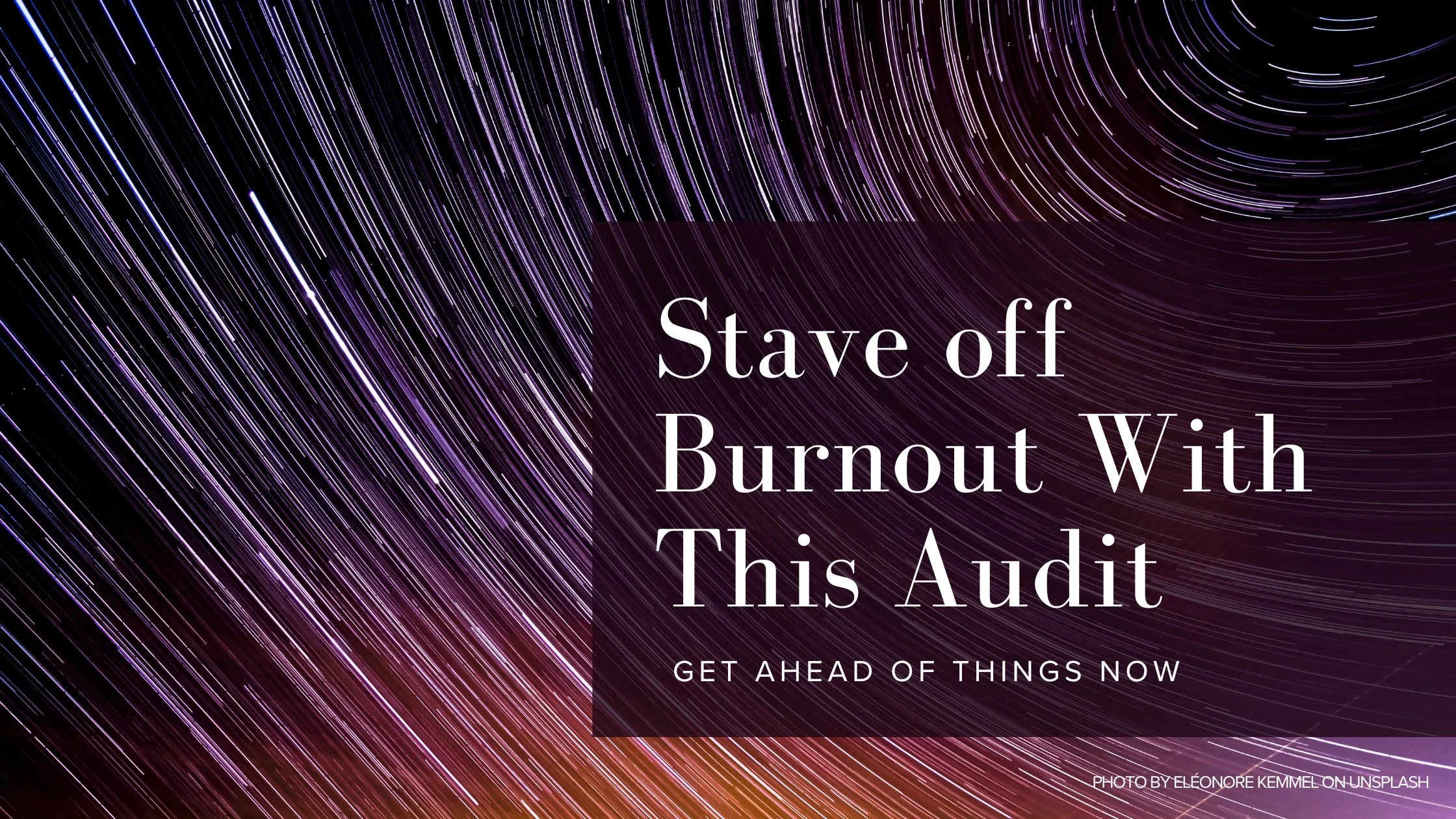Starting to feel burnt out? Try an Energy Audit. Here’s how.
If you’ve been feeling a fair bit exhausted lately… (gestures wildly around) you’re not alone.
It’s incredibly difficult in modern society to navigate the onslaught of constant information and tasks that we have on our to-do lists.
Since we can’t always hit pause, drop everything, and jet set to Europe, we have to figure out how to manage our energy as humans on a daily basis.
Ugh. Terrible. So let’s get into it, the why’s, the what’s, the how’s.
Why do we need to do Energy Audits?
We’re exhausted. We’re currently consuming 10x of the information that we previously were. We’re trying to juggle work tasks, home tasks, all while we’re told to relax more. But to relax is selfish.
We need to perform energy audits so that we can better understand where and how our energy is leaking. It can be an informative tool to help you assess where to spend your time moving forward, to the best of your ability.
Once you perform an audit, and keep doing that, you’ll be able to start staving off moments of burnout. Often we’re mismanaging our energy - focusing on the things right in front of us, rather than thinking about the long game, and what we truly want to do be doing and how we want to spend our time.
But what is an Energy Audit?
Simply put, it’s an audit of your energy! An Energy Audit takes stock of how you’re expending energy, what tasks give you more or less energy, and then leveraging that information as a tool to reassess how you plan your weeks. There’s lots of different ways to do this, but I’ll share my simple, easy approach below!
When should we perform an Energy Audit?
The best time is before you’re feeling completely burnt out. If you’re feeling exhausted, struggling to make time for yourself, see your tasks piling up, or ending each week only with enough energy to watch netflix… you may be approaching burn out.
It’s a super useful tool to catch yourself before your energy is completely depleted.
What’s the point of an Energy Audit?
Have you heard the phrase, “we all have 24 hours in the day”? While it’s an understandable sentiment, it only considers one unit of measurement - and one that’s not even that strong. Yes, I have 24 hours, but if I also have two full-time jobs and need to take care of my kids and have errands that I can’t outsource… my “hours” are limited based on what I have access to as a human.
What varies even more is our energy. Some days you slept well, you’re ready to go! Other days your baby woke up every 45 minutes, the dog has a stomach bug, insomnia/stress hit you hard. Some weeks you have lots of time to relax, some weeks you’re releasing a new product feature at work. Energy fluctuates. So it’s helpful to understand what gives you more energy. And then we can leverage it.
How to perform an Energy Audit
The simplest, easiest way is a couple simple steps.
Bust out your calendar from the last week or two - if you don’t keep a tight calendar, that’s okay, we’ll do it proactively over this upcoming week, instead (jump to step 4)
Reflect on each block of time/activity - remember all those activities, both at work and outside of work. How did you feel right after those activities? And then organize the tasks by:
Energy Gain - you walked away feeling pumped, super excited. It may have been exhausting, and a lot of effort, but you felt like you were on fire, that you could do it again, that you were proud of what you accomplished.
Energy Drain - you needed a nap afterwards. This is beyond you felt exhausted, you needed time to recoup, your brain was wrung out, and you wish you could have taken a break.
Energy Stays-the-Same - you didn’t feel drained or gained by that activity. It’s sort of a "have-to-do” but not a big deal. You were happy that the task was over, but weren’t watching the clock to wrap things up.
What did you learn? You may surprise yourself. I had a client once who didn’t love politics and hated meetings - but once they did this activity, they discovered that they really enjoyed preparing for and presenting those tricky meetings with key stakeholders and clients. It was difficult, but they walked away every time feeling exhilarated.
Go for the next week - If you want to lock-in your learnings, do it again this upcoming week. At the end of each day, or after each activity, reflect on how you’re feeling. (Almost like performing a flow test.)
Turn the dial moving forward - Okay, now you have a good feeling on what are the activities and tasks that make you feel like a superhero, and, a read on the activities that aren’t your favorite. As you look at your upcoming weeks, where are the opportunities to increase those energy-gainers? Where are the energy-drainers that you can delete or delegate?
Repeat as needed - You can always repeat this exercise as time and energy shifts to see what you need and are feeling!
Helpful? Want to do more of this work with an experienced sounding board that’ll help you challenge yourself even further… you know what to do.
